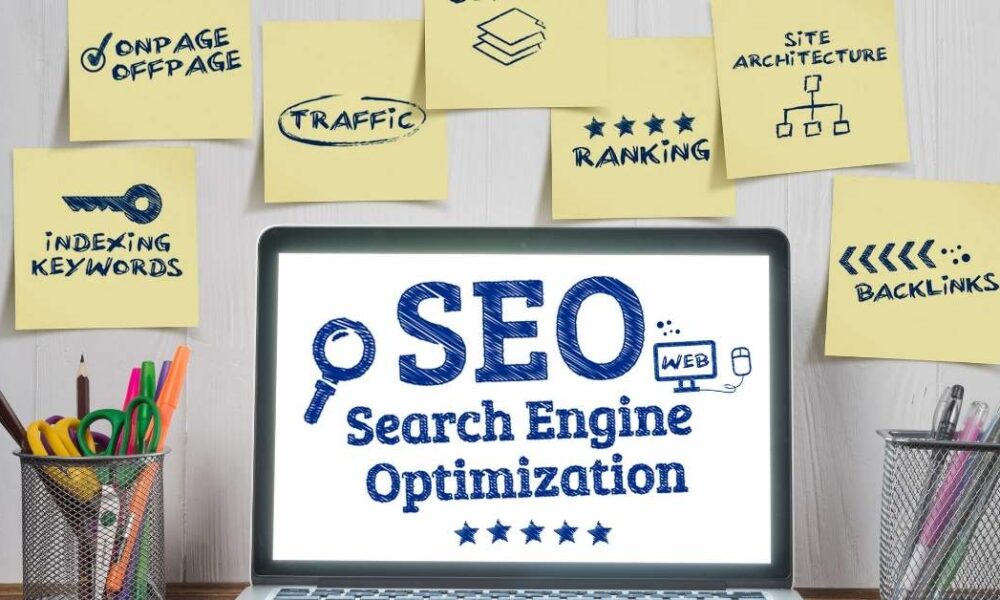In today’s digital age, having a website is just the first step toward establishing an online presence. To make your site visible to your audience, it needs to rank well on search engines like Google, Bing, and Yahoo. This is where Search Engine Optimization (SEO) comes in.
SEO can seem overwhelming at first, but understanding the basics can set you on the right path. This guide will walk you through the essentials of optimizing your website to improve search rankings, drive traffic, and grow your online presence.
Here are Some Key Components of SEO for optimizing a Website:-
To optimize your website effectively, you need to understand the main components of SEO:
1. Keyword Research:-
Keywords are the foundation of SEO. These are the words and phrases people type into search engines when looking for information.
- How to Find Keywords:
Use tools like Google Keyword Planner, Ahrefs, or SEMrush to identify keywords related to your niche. Look for terms with:- High search volume.
- Low to medium competition.
- Relevance to your content or products.
- Types of Keywords:
- Short-Tail Keywords: One or two words (e.g., “SEO tips”).
- Long-Tail Keywords: Phrases with three or more words (e.g., “how to optimize a website for SEO”).
2. Content Creation:-
Content is king in the world of SEO. High-quality, relevant, and engaging content keeps users on your site and encourages sharing.
- Blog Posts:
Write articles that answer common questions or provide value to your audience. - Evergreen Content:
Create timeless content that stays relevant, such as how-to guides, tutorials, or FAQs. - Multimedia:
Use videos, infographics, and images to make your content more engaging and shareable.
3. On-Page SEO:-
This refers to the optimization of elements on your website.
- Title Tags:
Ensure every page has a unique title tag that includes your target keyword and is under 60 characters. - Meta Descriptions:
These are summaries of your pages that appear on SERPs. They should be compelling and include your keyword. - Header Tags (H1, H2, H3):
Use headers to structure your content logically. Include keywords in these tags. - URL Structure:
Use clean and descriptive URLs (e.g., yourwebsite.com/seo-basics). - Image Optimization:
Add alt text to images with keywords to improve accessibility and SEO. - Internal Linking:
Link to other pages on your site to help users navigate and improve crawlability for search engines.
4. Technical SEO:-
Technical SEO ensures search engines can crawl and index your website efficiently.
- Mobile-Friendly Design:
Your site must be responsive and accessible on all devices, especially smartphones. - Website Speed:
Use tools like Google PageSpeed Insights to analyze and improve your site’s loading time. Faster sites rank higher. - XML Sitemap:
Submit a sitemap to search engines to help them index your pages. - Secure Website (HTTPS):
Use SSL certificates to ensure your site is secure, which is a ranking factor.
5. Off-Page SEO:-
This involves activities outside your website to improve its authority and ranking.
- Backlinks:
These are links from other websites to yours. Quality backlinks signal to search engines that your content is valuable.- Gain backlinks through guest blogging, creating shareable content, or networking with industry influencers.
- Social Signals:
While social media doesn’t directly impact SEO, sharing your content on platforms can drive traffic and boost visibility.
6. Local SEO:-
If your business has a physical location, local SEO helps attract nearby customers.
- Google My Business:
Claim and optimize your GMB listing with accurate details, photos, and reviews. - Local Keywords:
Use keywords like “best hotel in Dharamshala” to target a local audience. - NAP Consistency:
Ensure your Name, Address, and Phone number are consistent across all online platforms.
Common SEO Mistakes to Avoid
- Keyword Stuffing: Overloading your content with keywords harms readability and ranking.
- Ignoring Mobile Users: A site that isn’t mobile-friendly will lose traffic.
- Duplicate Content: Plagiarized or copied content can lead to penalties.
- Skipping Analytics: Use tools like Google Analytics to track performance and adjust your strategies.
SEO Tools to Get Started
- Google Analytics: Track traffic and user behavior.
- Google Search Console: Monitor site performance and fix crawl issues.
- Yoast SEO: A plugin for WordPress that simplifies on-page SEO.
- SEMrush/Ahrefs: Advanced tools for keyword research and competitor analysis.
The Timeline for SEO Success
SEO is not an overnight fix. It requires consistency, effort, and patience. Typically, you can expect to see noticeable results in:
- 3-6 months: If you implement a solid SEO strategy.
- 6-12 months: For more competitive niches.
Conclusion
SEO is an essential part of building a successful online presence. By mastering the basics—like keyword research, on-page optimization, and content creation—you can significantly improve your website’s visibility and attract more visitors.
Remember, SEO is a continuous process. Stay updated with the latest trends, track your progress, and adapt your strategies as needed. With time and effort, your website can climb the ranks and achieve sustainable growth. If you have some problems in seo you can Contact us for SEO Services.




